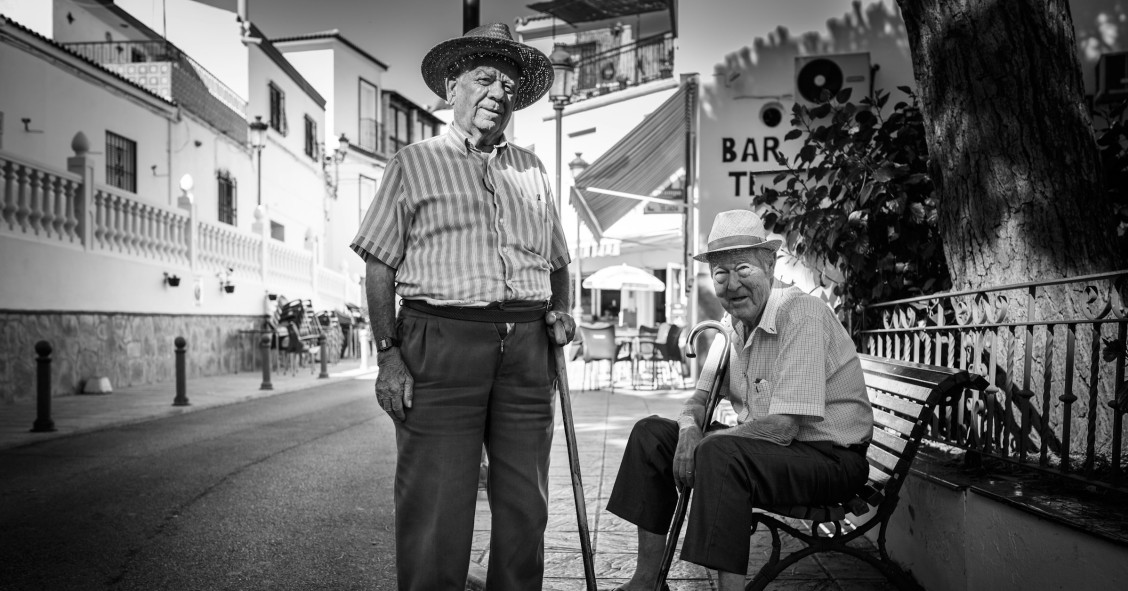
Perched on the Atlantic edge of Cádiz province, Chipiona is one of those places that manages to fly under the international radar, even though Spaniards have loved it for generations. The first thing you notice isn’t just the lighthouse or palm trees, but how easy it is to settle into daily routines when living in Chipiona. Morning walks along the sand, a slow coffee in the sun, gossip at the market, and the comforting sense that everyone still has time for a chat.
Only around 20,000 people call Chipiona home, but it’s got plenty going on, having recently been named the best place to live in Spain by YouGov. There’s always a fiesta brewing, beach bars are never far away, and the local strawberries are the real deal.
Is Chipiona a good place to live?

Chipiona is made for those who value community, low-key living, and not having to wrestle crowds to get a seat on the beach. It comes alive in summer, but most of the year you’ll find familiar faces wherever you go. There’s nothing flashy about the town, but everything you really need is close by. You'll get sea views, decent healthcare, little shops selling local produce, and honest tapas spots to linger in.
Chipiona weather
Year after year, Chipiona’s weather is what keeps people here. Mild winters rarely mean more than a cardigan, and even in peak summer, you get a fresh breeze from the ocean. Sunny days are the rule, not the exception, and you’ll see people out walking, cycling, or just sitting in doorways all year round.
History of Chipiona

Long before beach umbrellas arrived, this stretch of coast was keeping an eye out for wayward ships. The Romans put Chipiona on the map with their watchtower, the original “Caepionis Turris”. This historic lighthouse was built to help ships navigate the Guadalquivir River from the sea. Later, the town saw waves of Phoenicians, Moors, and Christians, each leaving stories and traditions still picked up during local fiestas or spotted in crumbling old lanes.
Living in Chipiona: pros and cons
Chipiona doesn’t shy away from what it is, and life here comes with its highs as well as a few quirks to get used to. If you’re thinking about settling down, it’s worth weighing these up.
Some of the pros of life in Chipiona include:
- Beaches stretch for miles and never get as rammed as those on the big resort strips.
- Daily costs—property, rent, eating out—are much easier on your wallet than in the more touristy bits of southern Spain.
- Folks generally look out for each other, and newcomers are soon regulars in local cafés or at town festivals.
There are a couple of downsides too:
- Winter can feel very quiet, with fewer places open and not much nightlife once the summer crowd leaves.
- Lack of international services—things like English-speaking doctors or official paperwork assistance—aren’t always on hand, so some basic Spanish helps a lot.
Chipiona: things to do

Whether you’re drawn by the Atlantic or happy just wandering, there’s no shortage of ways to idle away a day:
- Scramble up to the lighthouse or take pictures at sunset from the promenade.
- Pick up lunch at the local market and join the locals on Playa de Regla for a quick swim or sand-side picnic.
- When town feels sleepy, hop on two wheels or follow the sea path towards Sanlúcar de Barrameda for tapas and sherry by the river.
- Fiestas, street markets and music nights dot the calendar when the weather warms up.
Chipiona: cost of living
This is the kind of place where your euro goes further. Property prices in Chipiona as of April 2025 average roughly €2,220 per m², while rent on a decent flat sits near €9 per m².
A menu del día at lunchtime costs around €12, and your utilities and groceries won’t push the budget. A meal for two in a mid-range restaurant will most likely set you back around €35, and a beer shouldn't cost more than €4. Overall, living well here for a single person usually falls between €1,200 and €1,400 per month, depending on your tastes.
Where to live in Chipiona

You won’t have to travel far, but every pocket of Chipiona has something different to offer:
Centre/Old Town
Lively little squares and everything close at hand, from cafés to the market. Life here feels intimate—shops, bakeries, and tapas bars are woven through narrow streets. It’s mostly apartments and townhouses, and you’re never more than a few minutes’ stroll from the main beach.
Playa de Regla
Steps from the sand, Regla gets busy mid-summer, but is peaceful off-season. This strip is perfect if you love early morning sea dips or sunset strolls, as the promenade runs the length of the beach. You’ll mostly find low-rise apartments and holiday homes here, with beach bars popping up each summer.

Tres Piedras and urbanizaciones
More space, quiet streets, and the odd hidden bar. Urbanizaciones, or residential complexes, are quieter much of the year, which makes them good if you’re after peace and perhaps the odd pool or communal garden. These neighbourhoods are popular with families or anyone wanting a little garden and a slower pace. Villas and bungalows are in good supply, and the further out you go, the more likely you are to find green views or even a glimpse of countryside.
Playa Cruz del Mar
Playa Cruz del Mar sits just by the harbour and old town, offering a more local, lived-in feel than the main tourist beaches. Here, you’ll find low-rise apartments and fishermen’s cottages, with small bars and seafood spots frequented by year-round residents. It’s a great pick if you want to be by the sea in a proper neighbourhood that stays lively beyond summer.
Sanlúcar de Barrameda vs Chipiona
Just 15 minutes along the coast, Sanlúcar buzzes a bit louder. The city is great for nights out or people-watching in the historic square. It's on the map thanks to its local seafood dishes and strong sherry culture. Chipiona is smaller, more together, and the Atlantic’s never out of sight or hearing. It’s about what you want—lifelong fiestas and a crowd, or a daily dose of sea air and neighbours who know your name.
Living in Chipiona as an expat

You’ll find a few Brits, Germans and Dutch here—mainly folks after sun, simple routines, and easy-going neighbours. English is useful in a handful of local agencies, but having a bit of Spanish opens a lot more doors, especially to joining in at ferias or chatting over a caña. The expat crowd is friendlier than cliquey, and blending in means learning to love the little things: long coffees, slow walks, and never saying no to another helping of fried fish.
For non-EU citizens, it's important to work out which visa you need to settle down in Spain long-term.
Living in Chipiona for seniors
Retirement is easy here in one of Spain's happiest towns. Pavements are walkable, beaches accessible, and routines are built for calm mornings and sociable evenings. Senior residents tend to mix naturally with expats, especially at markets or neighbourhood bars. The town’s manageable size means practicalities—like banking, shopping, or visiting the market—are simple on foot. There's also a regular local bus service for those who’d rather avoid driving.
Healthcare is solid; for anything major, you’ll go to Sanlúcar or Jerez, but for everyday needs, it’s all close by. And with the weather, even winter feels made for getting out and about.
A good way to see if Chipiona is right for you in the long term is to drop in for a flying visit. Dip your toes and see if this stretch of the Cádiz coastline suits your style.







